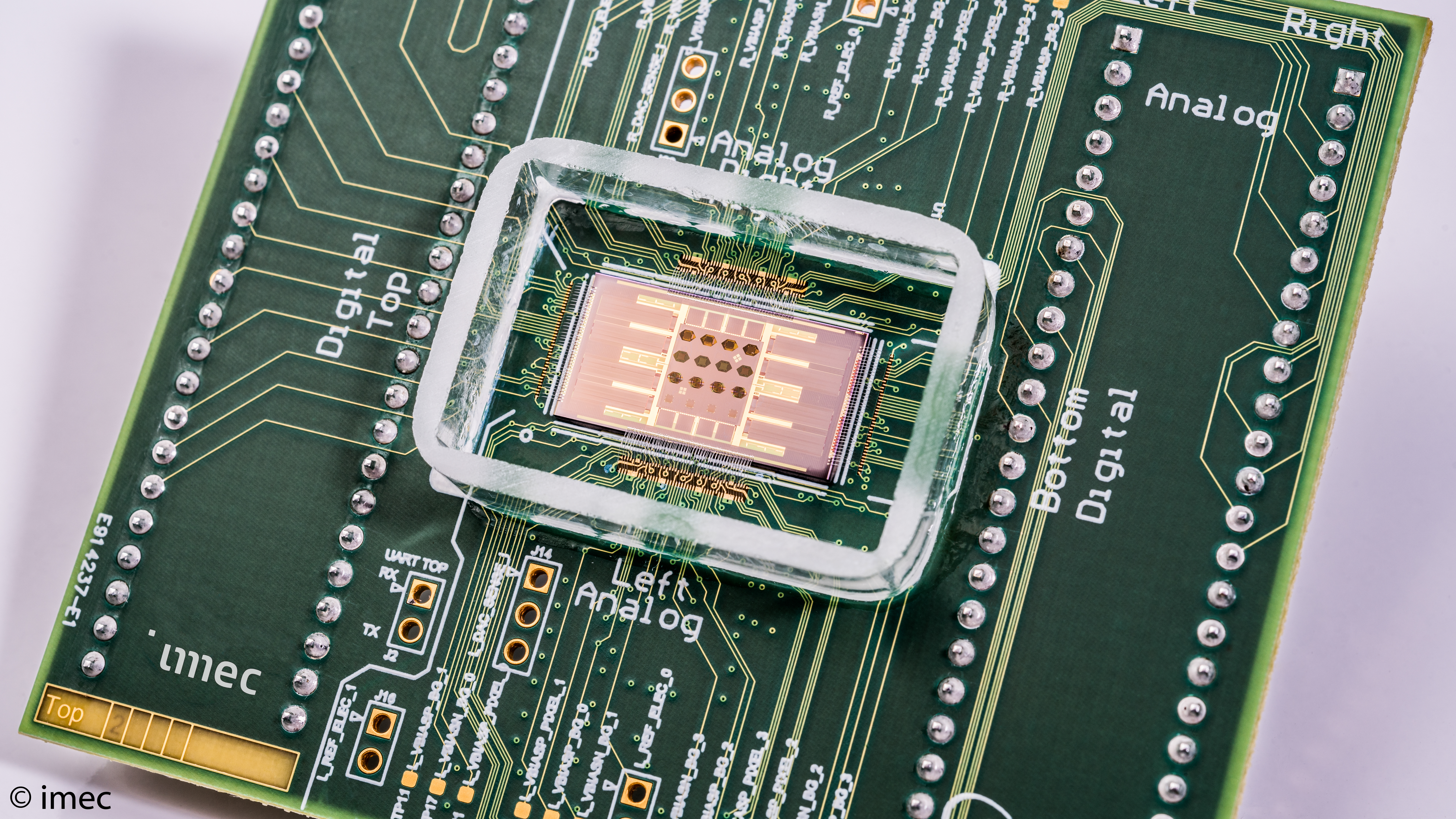Imec, the world-leading research and innovation hub in nanoelectronics and digital technologies, has designed and fabricated a 16,384-electrode, 1,024-channel micro-electrode array (MEA) for high-throughput multi-modal cell interfacing. The chip offers intracellular and extracellular recording, voltage- and current-controlled stimulation, impedance monitoring and spectroscopy functionalities thereby packing the most cell-interfacing modalities on a single chip, and being the only one to enable multi-well assays. With this new chip, imec has created a platform that enables high quality data acquisition at increased throughput in cell-based cell studies. Imec’s micro-electrode array chip will be presented at ISSCC in San Francisco, Feb. 11-15.
MEAs have since long been used for in vitro cell-interaction experiments. However, most of today’s MEAs do not support high throughput measurements, making current cell-assays time-consuming. They are typically passive devices, without built-in circuitry, therefore requiring complex external equipment for data acquisition. Additionally, most MEAs are not able to accommodate the extra sensing modalities to fully characterize complex cell behavior and interactions.
Imec’s high-throughput multi-modal CMOS-MEA packs 16,384 active electrodes with signal processing, filtering and analog-to-digital conversion on-chip, resulting in a very complete and compact system with easy interfacing. To improve the signal quality, each electrode has a miniature pre-amplifier. The electrodes are grouped in 16 clusters, each of which can be addressed individually, making it possible to run 16 experiments independently and simultaneously. This CMOS-MEA also includes 1,024 low-noise readout channels that can be connected to any of the 16,384 electrodes. The custom reconfigurable on-chip circuits support 6 cell-interfacing modalities: both extra- and intracellular electrical activity recording, constant voltage and constant current stimulation for cell excitation or localized electroporation, fast impedance monitoring and, finally, impedance spectroscopy. While fast impedance monitoring can detect impedance changes over time and cell presence for optimal electrode selection, single-cell impedance spectroscopy gives detailed information of the electrode impedance, seal resistance and cell-membrane impedance which can be used for cell differentiation. Imec’s high input impedance, low noise and low power reconfigurable circuits make it possible to integrate 1,024 parallel readout channels and 64 reconfigurable stimulation units on a small chip area.
“Not only are we reporting the highest number of modalities so far on a single chip with a very high channel count, we are able to achieve this without any performance penalty. Moreover, by offering six modalities on such large scale, the imec CMOS-MEA will greatly improve the throughput and versatility of cell-based assays,” commented Nick Van Helleputte, manager biomedical circuits at imec. “With the introduction of CMOS chip technology into the MEA-technology, we have realized a breakthrough in cell interfacing.”























